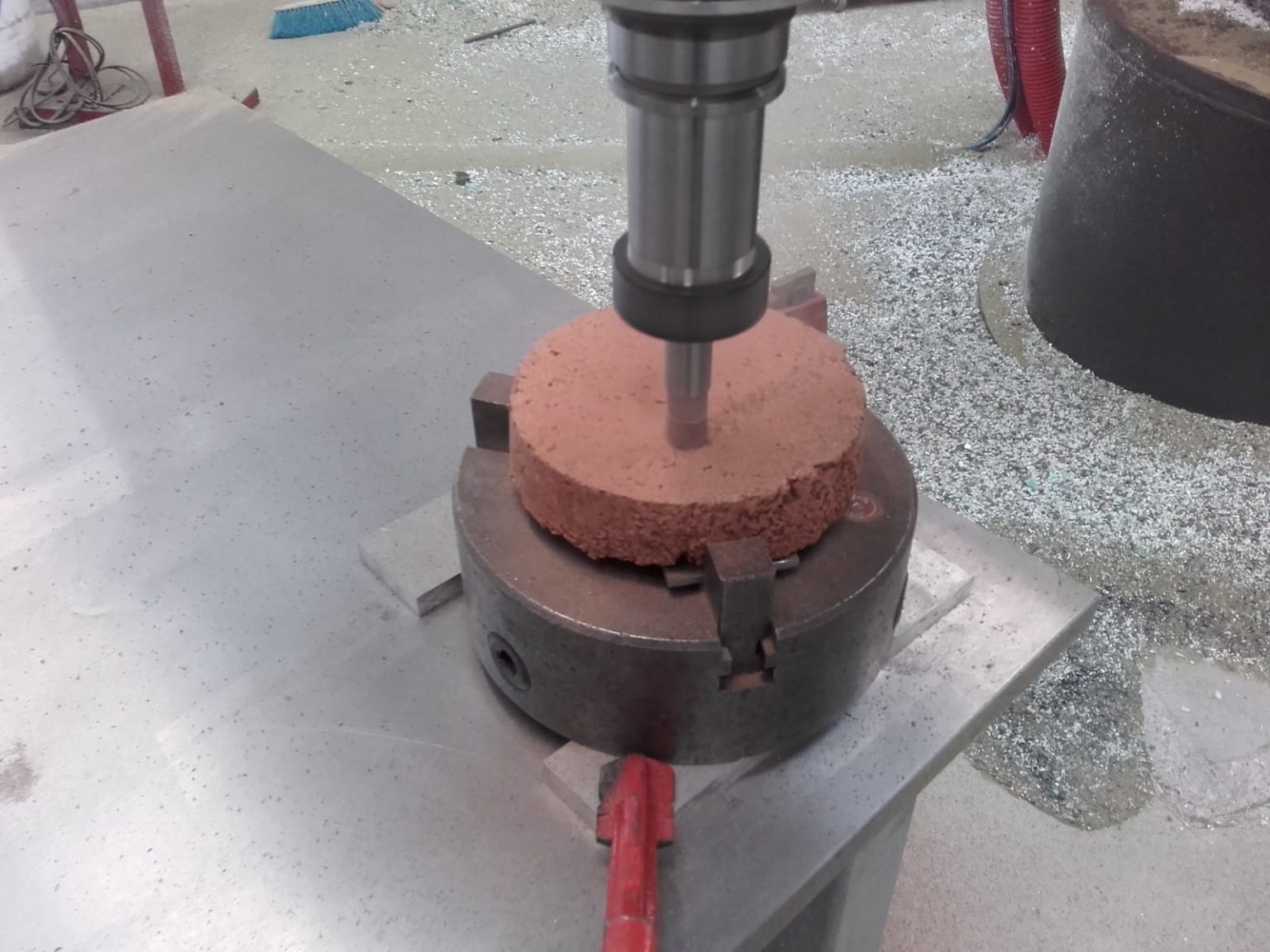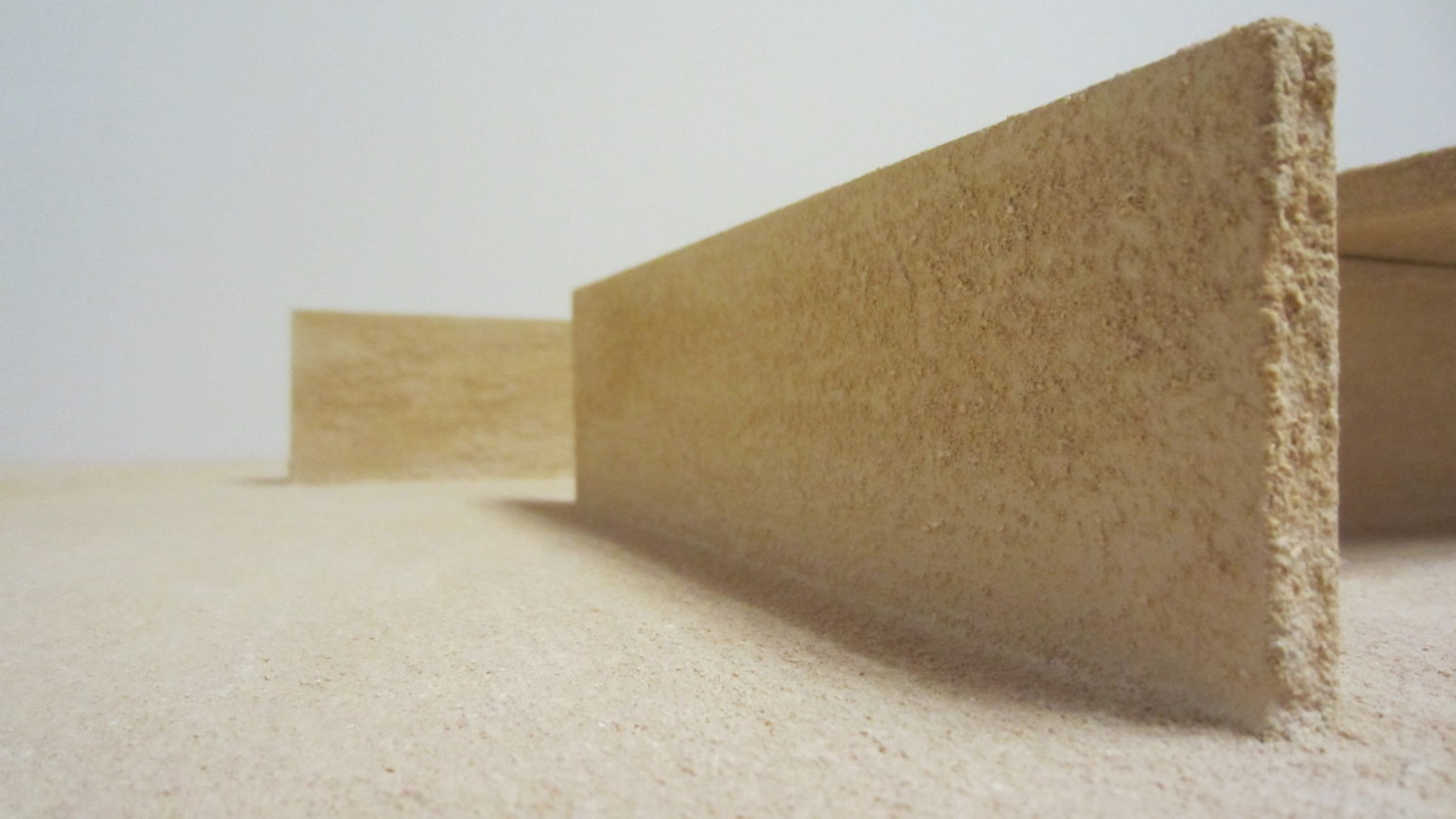This study refers to the use of forest and agricultural waste, such as bushes or tree bark, to improve the performance of compounds and the construction method with which to build with compressed earth in regions or geographical latitudes where, until now, it was possible. With up to 90% of local resources, the objective of this study is to demonstrate the viability of the Circular Economy, taking the construction of architecture with earth as a demonstrative example.
At KS Consulting https://kmsstudio.net/ks-consulting we demonstrate that natural raw materials, specifically forest, agricultural and mineral wastes, are viable for producing products and consumer goods for a Local Economy. We reverse the use we make of these wastes so that, instead of throwing them in a landfill or burning them, we use them in the development of high-performance compounds with which to manufacture, for example, compressed earth houses with stable quality and sustainable over time.
Our methodology is aimed at generating local wealth and is based on updating traditional methods to implement them in the three production sectors.
Primary Sector.- Use of natural resources, diagnosing and collecting Natural Raw Material, including marine, forest and mineral waste, exclusively for a pre-established design.
Secondary Sector.- Handling of Natural Raw Material to manufacture specific compounds with which we will manufacture our prototype or demonstrative example.
Tertiary Sector.- Implementation in the market using tools such as a Business Plan (Canvas) and a standard WordPress web page.
Please highlight how the project can be exemplary in this context
In archeology we find numerous references to how natural resources were used to produce elements useful to society. Updating traditional methods by improving the production chain reaches a high level of inclusiveness of the different trades that participate in a project, even more so if the project refers to the architectural format, as it is the format that includes the most disciplines and trades in its realization.
This is how the artisans who developed the methods that we update today for the elaboration of the elements that make up architecture, create a blended social network whose dynamics generate communicating vessels between the different sectors of production. In this way, the choice and extraction of natural resources is optimized, the elaboration of compounds with which to build products and consumer goods for their subsequent commercialization in a network of collaborations at a glance that results in the generation of local or regional cultural wealth.
Please highlight how the project can be exemplary in this context
The visual language of nature is clearly represented in our works. We develop detailed studies that combine texture, color and shape seeking the visual balance with which we will identify ourselves as observers.
Our goal is to bring the visual language of nature to our most intimate environment, in order to find our own space in which we can develop as a person, and also in our most social environment in order to share the same experiences that will help us to unite the social network.
The example that we present tries to build houses using the same earth of the place so that the architecture is integrated into the natural visual environment.
Likewise, we bring the possibility of sculpting, of shaping natural compounds, to a larger social group thanks to the implementation of technological aids that make processes easier and we can express ourselves through form.
Please highlight how the project can be exemplary in this context
We have two lines of action that are clearly compatible. We start creating with our hands in the most austere way possible to recognize what our physical limitations are. During this process we realize that we can manufacture elements without the help of technology, such as bricks, cladding or furniture, on an individual scale. This process does not require a high energy effort, so individuals without or with few monetary resources can access its realization.
Once we have learned to generate elements on a domestic scale, in the process of which we have already learned a lot about the behavior of our natural matter, we can enrich our methods by incorporating different levels of technologies to help production. During this process, individuals who come from professional technical or engineering disciplines capable of developing from the simplest tool to complex machinery are incorporated.
Once both lines of action have merged into one, we will realize that farmers, lumberjacks or miners to mechanics, welders or robotics experts have taken part in the production line. All this thanks to the simplicity and austerity of the methods and the low monetary cost in the acquisition of technology.
Please highlight how this approach can be exemplary
Architecture is one of the pillars on which our civilizations are based because it protects us and our creations from the aggressive elements of the atmosphere.
Architectural construction is the professional format that brings together the most demonstrative examples of sustainability, demonstrating that built elements can maintain their quality for several generations with low-specialization maintenance.
In this format, the visual information of our natural environment is captured, integrating it into the ecosystem by avoiding contrasts and accents that distort our vision, or visual reading, of said natural environment.
For both reasons and with the support of simple technological innovations that favor being able to create by mixing various disciplines in the same architectural context, it encourages the participation of groups that until now were oblivious to the achievement or elaboration and commissioning of a design in which the different agents, individuals or groups have participated from the beginning.
From: https://kmsstudio.net/cases-study-basics
CASE STUDIES DEVELOPED AT NC&T Workshop BY JOAQUIM MELCHOR.
QUESTION:
IS NATURAL MATTER VIABLE TO GENERATE LOCAL WEALTH BY BUILDING STABLE AND SUSTAINABLE FORMS OVER TIME ?.
The references that support this work are, my own field experience in the restoration of modernist heritage, which I consider to be the last time formal art focused on the optimization of matter and its language, and the examples found in archaeological sites .
Our job is to diagnose the characteristics of natural raw materials and mix them looking for their compatibility. It is also our job to design the method that will allow us to produce complex designs as consumer goods. In this context, I put at your disposal examples of cases in which, not only is it demonstrated that natural matter is viable to create stable forms, but that it is possible to generate local wealth in terms of self-sufficiency.
Basic parameters on which to base each study: Km 0, Energy, Specialization, Method.
CASE STUDY 1 – Girona. https://kmsstudio.net/case-study-1-girona
TITLE.- Clay for 3D printing or Additive Manufacturing.
Problem to solve. Improve the living conditions and habitability of the inhabitants in the refugee camps by replacing the tents with non-ephemeral buildings with stable quality over time. This study also provides a solution in catastrophic areas.
CASE STUDY 2 – Malaga. https://kmsstudio.net/case-study-2-malaga
TITLE.- FOREST WASTE OF CORK IN NAUTICAL.
Problem to solve. The manufacture of floating artifacts is based almost exclusively on compounds derived from hydrocarbons or wood.
CASE STUDY 3 – Castellón. https://kmsstudio.net/case-study-3-castellon
TITLE.- Rammed Earth Wall. Tradition and evolution.
Problem to solve. If we study what is the best way to protect ourselves from the inclemencies of nature, it is easy to conclude that a cave is the best option......
Please also explain the benefits that derived from their involvement.
An important characteristic as a consequence of executing the Circular Economy precepts at a local or regional level is that logistics does not depend on large corporations, becoming the responsibility of local agents who, although they already operated in a global market, in this new context they can develop more detailed and considerate protocols with the three sectors of production.
Likewise, by shortening the distance between the different logistical and commercial interests, it is easier to design exclusively for local use, so that the participation in the concept of all the groups to which the fabrications are directed becomes essential to carry out a coherent design with the use and function of the manufactured item.
For example, the interior architecture designer can easily start a conversation with the members of the first production sector to choose the material that he wants to see in his design put into service. This situation is almost impossible in a global market in which the interests remain in the possession of agents external to the specific Local or Regional Economy.
In general, the problem that we encounter at the time of putting our solutions into service is a product and service standardization regulation that is very suitable for a global economy directed to large corporations. This regulation leaves civil liability in an "alegal" situation (legal but not standardized) so that the system is vulnerable to any design or manufacturing error.
Likewise, this regulation is very demanding in the technical parameters necessary for the legalization of the small industry that would manage a local market, so the monetary investment is very high, which prevents many initiatives from being curtailed from the beginning.
To solve this problem, it is necessary to legislate in favor of small economies that allow, for example, that small companies can collect and process the waste generated by nature at different levels of environmental catastrophes without waiting for a slow state bureaucracy that favors the seriousness of the event, and a subsidy system that recognizes small amounts, for example, in the last consultation carried out at the end of 2021, state subsidies for industry were managed from €350,000 when a small industry or professional only needs around €80,000 leaving the operation to the credit system.
The innovation of this project is based on two aspects.
An innovation refers to the cultural and social aspect that is the empowerment of the individual before large corporations that do not have the waist or the flexibility to assess local cases. This situation results in the improvement of the social network by generating trust between neighbors united by a common and local interest.
Another innovation is technical, referring to the disruption that our solutions mean in current production chains, very accustomed to the use of hydrocarbon derivatives. The introduction of forest, agricultural and mineral wastes in the production chains sometimes represents a reduction of up to 90% of plastics as filler. In addition, the energy footprint decreases considerably by also reducing the logistics required for the import and export of materials by having local raw material.
Please provide clear documentation, communication of methodology and principles in this context.
Our solutions can be exported to any civilization or society that has natural resources, which means that they can be exported to different geographical areas and latitudes since our compounds can be designed to withstand extreme cold or hot, wet or dry environments.
For this we have developed a tool "TheKSFactory" https://kmsstudio.net/theksfactory that brings together a clear technical action protocol.
At TheKSFactory we develop high-performance compounds based on the use of up to 90% of marine, forest and natural mineral waste, destined for the development and production of local consumer goods, or “km0” according to a pre-established design.
TheKSFactory operates as a trademark of KS (Km's Studio), to franchise in the required global geographic area. Through this franchise, we offer support to companies or professional groups interested in implementing the solutions promoted in KS (Km's Studio).


@Km's Studio, 2022
Content licensed to the European Union.